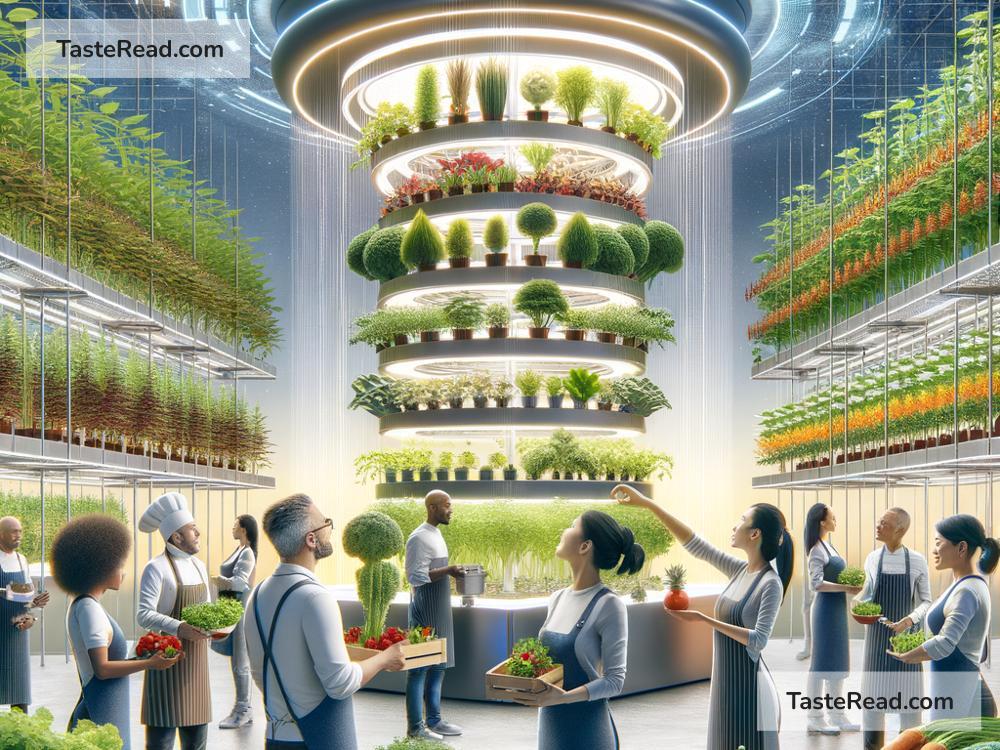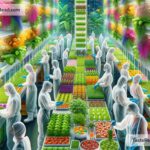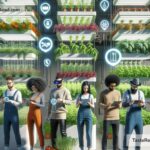The Future of Food and Participatory Systemic Collaboration
Food is something that connects us all. Whether it’s a homecooked meal or street food shared with friends, food plays a big role in our daily lives. But the way we produce, distribute, and consume food is changing—and it needs to keep changing. Why? Because the world faces big challenges like climate change, population growth, and unequal access to nutritious food. To solve these problems, we need fresh ideas, teamwork, and new ways of thinking about food systems.
One exciting possibility for the future of food is called participatory systemic collaboration. That might sound complicated, but it’s really about working together in creative ways to build better food systems—systems that are sustainable, fair, and able to serve everyone. This blog explores what the future of food could look like and how participatory collaboration can help us get there.
The Big Challenges in Food Today
Before we dive into solutions, let’s look at the challenges we face.
-
Climate Change: Agriculture is one of the biggest contributors to greenhouse gas emissions. Extreme weather events like droughts and floods make farming harder, threaten food supply, and lead to higher prices.
-
Rising Population: By 2050, it’s predicted there will be nearly 10 billion people on Earth. Food production will need to increase significantly, but current farming practices may not be able to keep up without harming the planet.
-
Food Waste: Every year, about one-third of all food produced is wasted. At the same time, millions of people go hungry. This mismatch is something we urgently need to fix.
-
Economic Inequality: Not everyone can afford healthy food. Many people live in food deserts—communities where fresh fruits and vegetables are hard to find.
-
Loss of Biodiversity: Over the years, we’ve leaned heavily on a small number of food crops like rice, wheat, and corn. This reduces biodiversity and makes food systems vulnerable to pests and diseases.
The Role of Participatory Systemic Collaboration
So, how do we tackle these problems? One idea is participatory systemic collaboration. Let’s break that phrase down:
-
Participatory: This means involving everyone—farmers, scientists, businesses, policymakers, and communities. No one has all the answers, so it’s important to bring different perspectives and experiences together.
-
Systemic: Food systems are complex, with many interconnected parts (like farms, markets, transportation networks, and consumers). Solving food-related problems requires looking at the big picture instead of focusing on isolated issues.
-
Collaboration: Working together ensures that solutions are not just for some but for all. Collaborative approaches create shared ownership and accountability.
What Could the Future of Food Look Like?
Imagine a world where food systems work better for people and the planet. Here are some inspiring possibilities that could be achieved through participatory systemic collaboration:
-
Precision Farming: In the future, farmers could use advanced technology like drones, sensors, and AI to grow food more efficiently. This reduces waste, saves water, and lowers the environmental impact. Farmers, scientists, and tech companies could collaborate to make these tools widely accessible.
-
Alternative Proteins: We’ve already seen exciting developments like lab-grown meat and plant-based burgers. In the future, farmers, food companies, and researchers could work together to further innovate, creating more sustainable protein options that reduce reliance on traditional livestock farming.
-
Urban Agriculture: Roof gardens, vertical farms, and community plots could become common in cities. Local leaders, architects, and urban farmers could work with residents to make fresh food more available in urban areas.
-
Shorter Supply Chains: Imagine food systems where farmers sell directly to consumers or small markets without relying on complicated global transport systems. Producers and consumers could collaborate to build partnerships that prioritize fair prices and less waste.
-
Educating the Next Generation: Schools could include hands-on food systems education—teaching kids how to grow food, cook healthy meals, and reduce waste. Communities, educators, and parents could work together to shape this future.
-
Climate-Resilient Crops: Farmers could collaborate with scientists to grow crops that are resistant to drought, floods, or pests. These crops could ensure a stable food supply in the face of climate uncertainty.
How Can We Make This Vision a Reality?
To create a better future for food, certain steps need to be taken:
-
Strengthen Community Voice: Communities affected by food challenges must have a seat at the table. Whether it’s designing policies or developing technologies, their input is invaluable.
-
Open Science and Data Sharing: Researchers and innovators should share discoveries openly so that everyone—small-scale farmers, policymakers, and nonprofits—can benefit.
-
Support Local Efforts: Small changes in neighborhoods—like organizing farmers’ markets or teaching food-growing techniques—can add up to big systemic shifts over time.
-
Build Networks: Connecting people across industries and regions enables collaboration on a massive scale. Farmers in one part of the world might benefit from ideas and tools developed in another.
Conclusion
The future of food is filled with challenges, but also with opportunities. Through participatory systemic collaboration, we can reimagine food systems to be more sustainable, inclusive, and resilient. This means bringing together farmers, scientists, communities, and businesses to work as partners, creating solutions that benefit both people and the planet.
By thinking creatively and working collaboratively, we can move towards a future where no one goes hungry, our environment is protected, and food truly remains a source of connection and joy for all. The journey will take effort, but the rewards are well worth it. Let’s work together to build that future—starting today.


